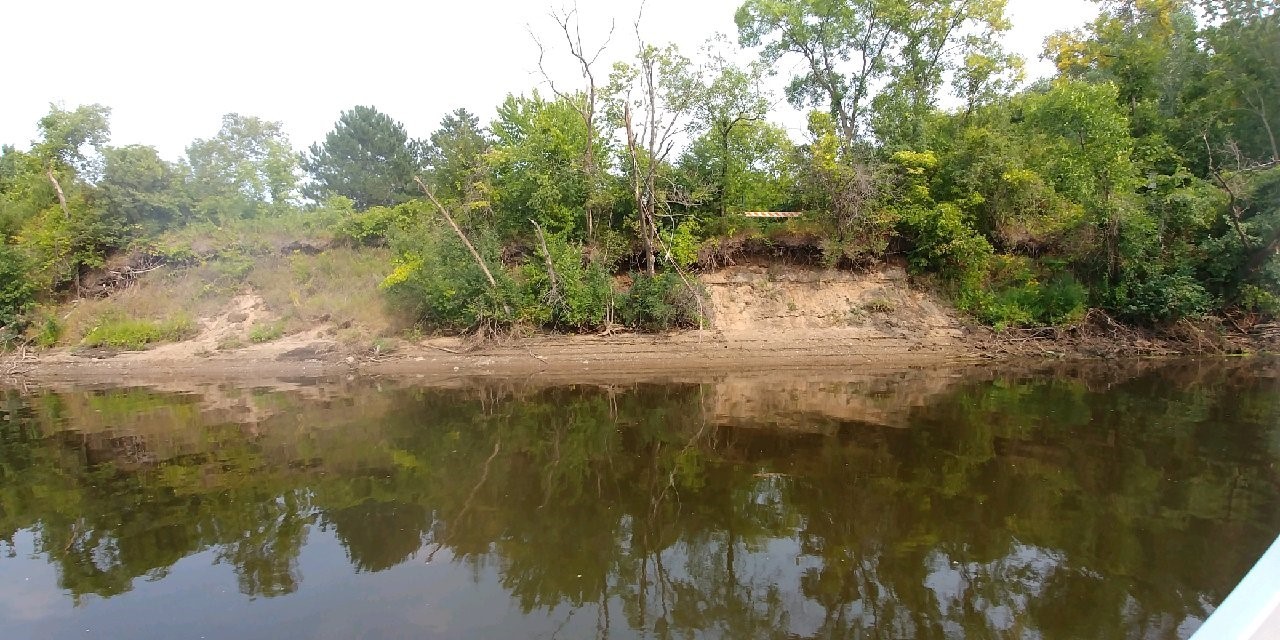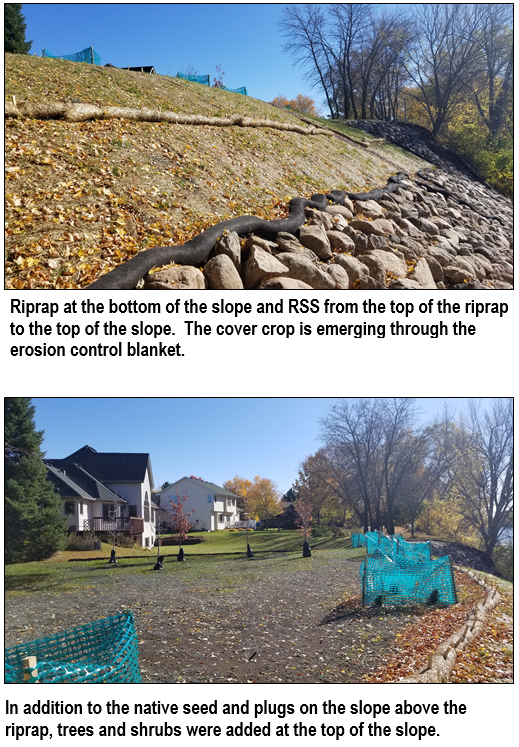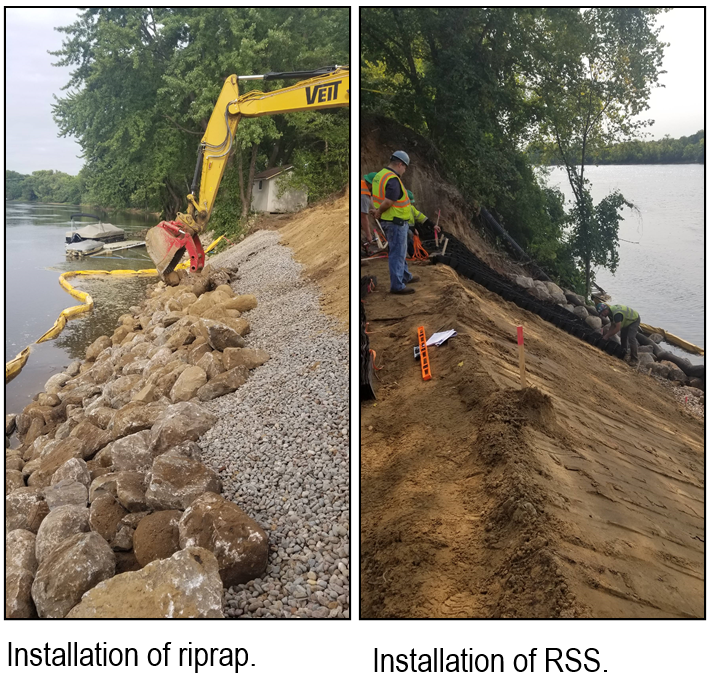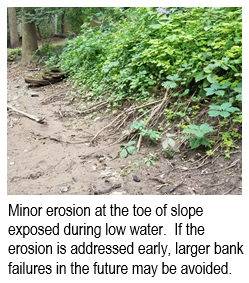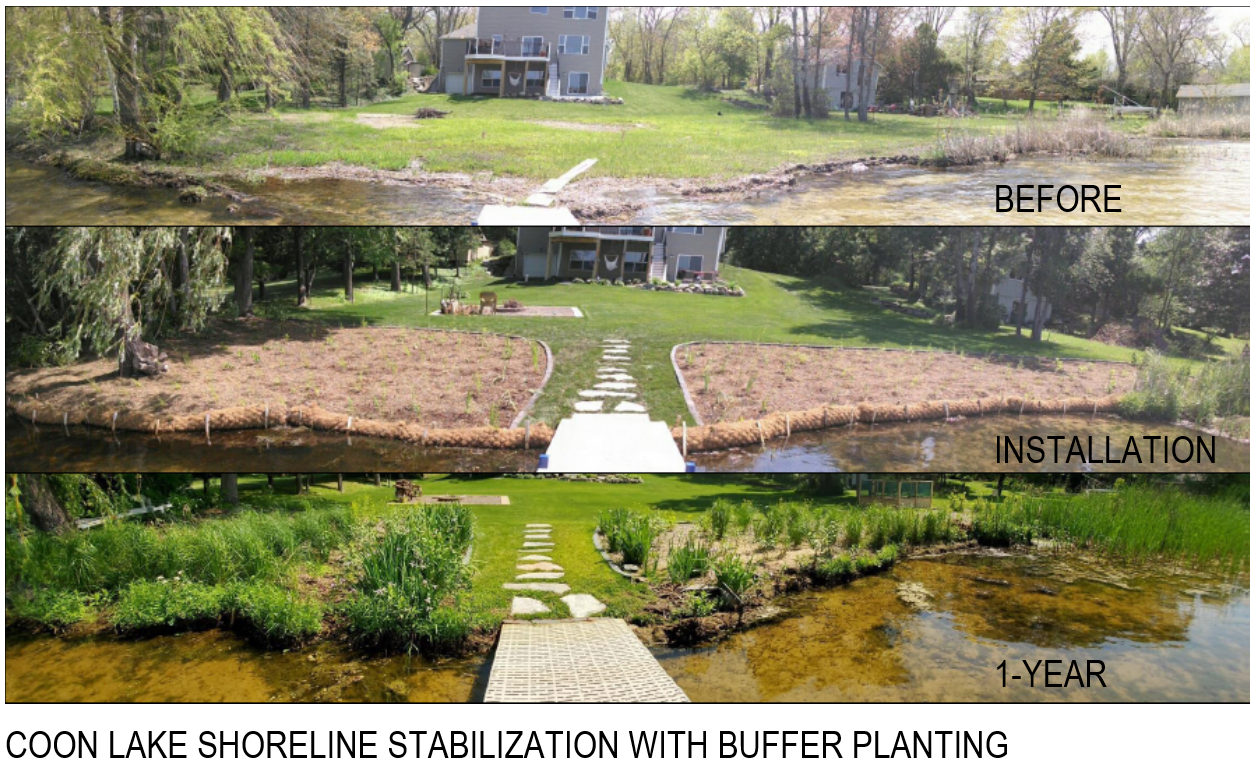Approximately 1,500 linear feet of eroding riverbank within Mississippi River Community Park in Anoka will be stabilized in 2021. The project is currently in the early stages of design and focuses on a stretch of severely eroding riverbank that was documented in an erosion inventory completed by ACD.
Eroding river banks contribute to the Mississippi River's sediment and turbidity impairments through direct loading of sediment and nutrients that degrade overall water quality as well as aquatic and nearshore habitat. Stabilization of actively eroding riverbanks is one of the most cost-effective practices to improve water quality because 100% of the sediment reaches the waterway.
Stabilization techniques will include bioengineering with native vegetation and a rock armored bottom of slope to stabilize the riverbank. The project will reduce pollutants by 529 tons of sediment and 847 pounds of phosphorus annually. Other benefits include aquatic life diversity and abundance, and improved drinking water quality because the project site is immediately upstream of drinking water intakes for the Twin Cities.
This project will also showcase river stewardship and enhance public recreation. Mississippi River Community Park and adjacent Anoka-owned King's Island include 1.7 miles of Mississippi River trail, 0.78 miles of riverfront, 0.91 miles of oxbow channel, pedestrian access to the island, sporting fields, public duck and deer hunting, and a fishing dock. This project will make over ¼ mile of unsafe riverbank more accessible, stable, and fishable for users. By naturalizing the riparian zone, this project complements the Mississippi River Corridor Critical Area rules.
The project is funded by a Clean Water Fund grant, a Watershed Based Funding grant, and match from the City of Anoka. Watch for more updates from ACD and the City of Anoka as the project progresses.
